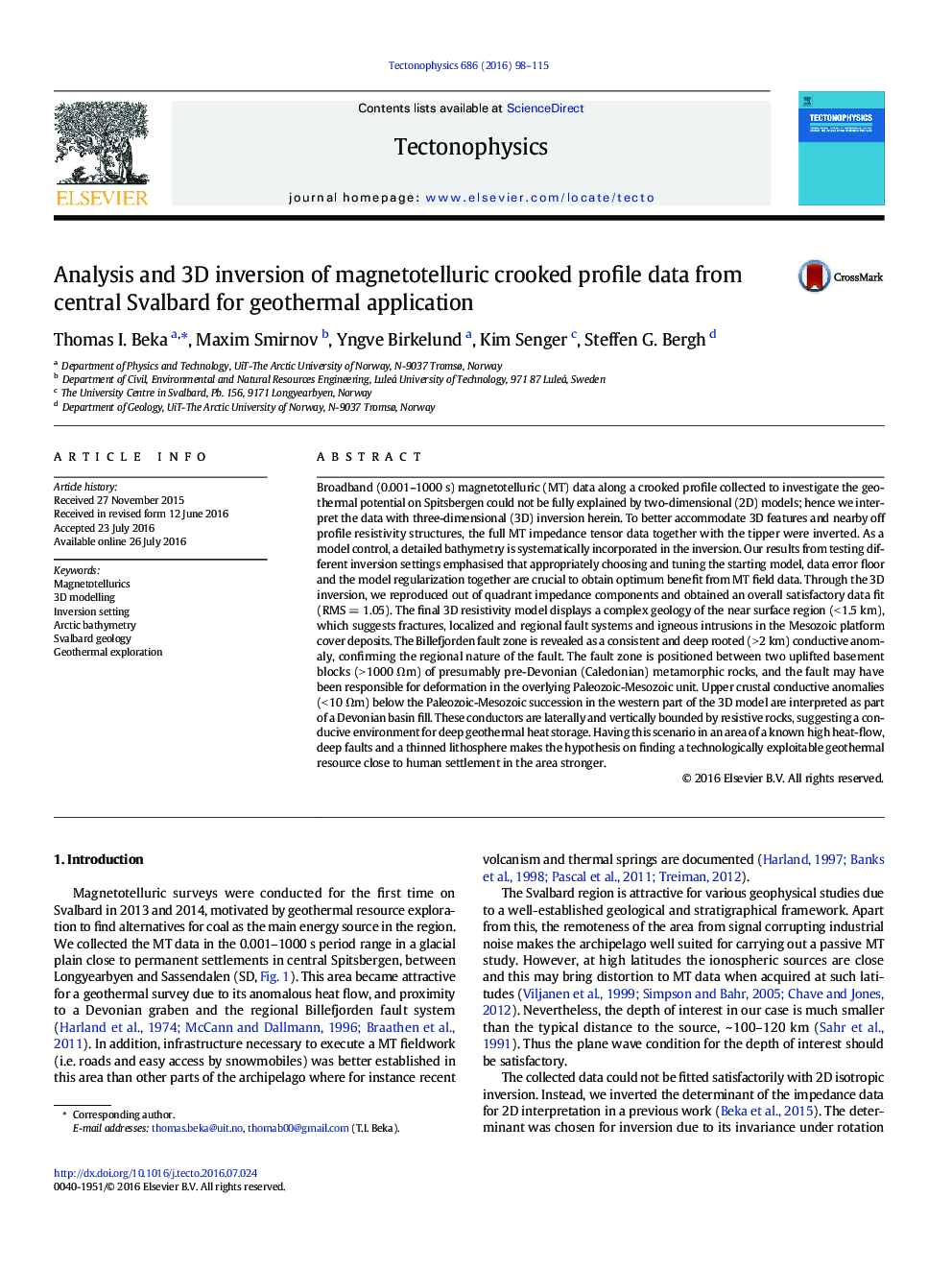| کد مقاله | کد نشریه | سال انتشار | مقاله انگلیسی | نسخه تمام متن |
|---|---|---|---|---|
| 6433265 | 1636712 | 2016 | 18 صفحه PDF | دانلود رایگان |
- A complex geology and the geothermal potential on Svalbard are characterized through a recent magnetotelluric data set.
- A crooked profile data are systematically analyzed and inverted effectively in 3D.
- Various 3D inversion strategies are tested and a workflow to improve the inversion output is suggested.
- The shallow (<Â 1.5 km) crustal resistivity is found to be inhomogeneous.
- The MT data favoured geothermal scenarios in the vicinity of a deeply seated fault and upper crustal Devonian basin fills.
Broadband (0.001-1000 s) magnetotelluric (MT) data along a crooked profile collected to investigate the geothermal potential on Spitsbergen could not be fully explained by two-dimensional (2D) models; hence we interpret the data with three-dimensional (3D) inversion herein. To better accommodate 3D features and nearby off profile resistivity structures, the full MT impedance tensor data together with the tipper were inverted. As a model control, a detailed bathymetry is systematically incorporated in the inversion. Our results from testing different inversion settings emphasised that appropriately choosing and tuning the starting model, data error floor and the model regularization together are crucial to obtain optimum benefit from MT field data. Through the 3D inversion, we reproduced out of quadrant impedance components and obtained an overall satisfactory data fit (RMS = 1.05). The final 3D resistivity model displays a complex geology of the near surface region (< 1.5 km), which suggests fractures, localized and regional fault systems and igneous intrusions in the Mesozoic platform cover deposits. The Billefjorden fault zone is revealed as a consistent and deep rooted (> 2 km) conductive anomaly, confirming the regional nature of the fault. The fault zone is positioned between two uplifted basement blocks (> 1000 Ωm) of presumably pre-Devonian (Caledonian) metamorphic rocks, and the fault may have been responsible for deformation in the overlying Paleozoic-Mesozoic unit. Upper crustal conductive anomalies (< 10 Ωm) below the Paleozoic-Mesozoic succession in the western part of the 3D model are interpreted as part of a Devonian basin fill. These conductors are laterally and vertically bounded by resistive rocks, suggesting a conducive environment for deep geothermal heat storage. Having this scenario in an area of a known high heat-flow, deep faults and a thinned lithosphere makes the hypothesis on finding a technologically exploitable geothermal resource close to human settlement in the area stronger.
Journal: Tectonophysics - Volume 686, 24 August 2016, Pages 98-115
